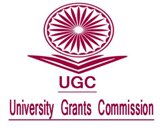Constraints faced in the Adoption of Technologies by Chawki Rearing Centre Entrepreneurs
DOI:
https://doi.org/10.26725/JEE.2020.2.32.6520-6530Abstract
Chawki Rearing Centres (CRCs) act as backbone of silkworm rearing activity. The study was conducted in 100 CRCs of six traditional sericultural districts of Karnataka with the objective of understanding the constraints faced by CRC entrepreneurs in adoption of recommended technologies. Through pilot survey, 30 constraints were identified and they were ranked based on Garrett score. While shortage of farm laborers, scarcity of irrigation water, lack of technical guidance in pest and disease management, difficulty in harvesting leaf and shootlet alternatively and high labor wages were the major constraints in adoption of mulberry leaf production technologies, inadequate rearing space, scarcity of skilled workers, lack of space for supporting activities, lack of technical guidance to diagnose diseases and high wages of skilled workers were the major constraints in adoption of silkworm rearing technologies. Measures to be taken to overcome these constraints are suggested.References
Angadi, B.S. & Nair, S.K (2013) Central Silk Board (Amendment) act, 2006 –Rules and regulations governing registration of chawki silkworm rearers. Workshop on ‘Role of chawki rearing centers (CRC) in Bivoltine silk production, CSR&TI, Mysore. p: 36-40
Anonymous, (2018). Citizens Charter –2017- 18, Annual report, Department of Sericulture Government of Karnataka. : 19
Anonymous, (2019). Seri-states of India – A profile. Compendium published by Central Silk Board, Bengaluru. : 6
Kallimani C.S & Basavaiah (2020). Knowledge and adoption of Mulberry leaf production technologies and their co-relationship with socio-economic factors of chawki rearing centre entrepreneurs in traditional sericultural districts of Karnataka. Research Journal of Agricultural Sciences 11(5) :1149-1156
Garrett, H. E. (1981). Statistical Psychology and Education. Vakils, Feffer and Simons Private Limited, Bombay.
Murali Krishnan, L, Philip, H, Chinnadurai, M. & Ravichandran, V. (2015). Constraints in the adoption of eco friendly conservation practices. Journal of Extension Education 27(3): 5494-5498
Radhakrishna, P. G, Sekharappa, B. M, Shivakumar, C. & Bongale, U. D.(2004). Chawki Silkworm Rearing – Integrated Capsule Technology Package. Karnataka State Sericulture Research and Development Institute, Thalaghattapura, Bangalore. : 1-11.
Shashindran Nair K. & Mishra R. K. (2018). Commercial silkworm chawki rearing centres in India – An overview. Indian Silk 9(57 ) No.7-8: 4-9
Sivaprasad V, Himantharaj M T, Verma, S. & Mogili T. (2015). Commercial Chawki Rearing, CSRTI, CSB, Srirampura, Mysore.
Vijayakumari, K. M. & Rajan, R. K. (2005). An economic analysis of factors influencing income from commercial chawki rearing in Karnataka. Indian Journal of Sericulture 44(2):208-211.
Downloads
Published
How to Cite
Issue
Section
License
Copyright (c) 2020 Journal of Extension Education

This work is licensed under a Creative Commons Attribution-NonCommercial-ShareAlike 4.0 International License.
Authors who publish with JEE agree to the following terms:
- Authors retain copyright and grant JEE right of first publication with the work simultaneously licensed under a Creative Commons Attribution License that allows others to share the work with an acknowledgement of the work's authorship and initial publication in this journal.
- Authors are able to enter into separate, additional contractual arrangements for the non-exclusive distribution of the journal's published version of the work (e.g., post it to an institutional repository or publish it in a book), with an acknowledgement of its initial publication in this journal.
- Authors are permitted and encouraged to post their work online (e.g., in institutional repositories or on their website) prior to and during the submission process, as it can lead to productive exchanges, as well as earlier and greater citation of published work (See The Effect of Open Access).
Extension Education Society
https://creativecommons.org/licenses/by-nc-sa/4.0/
This work is licensed under a Creative Commons Attribution-NonCommercial-ShareAlike 4.0 International License.














.png)

